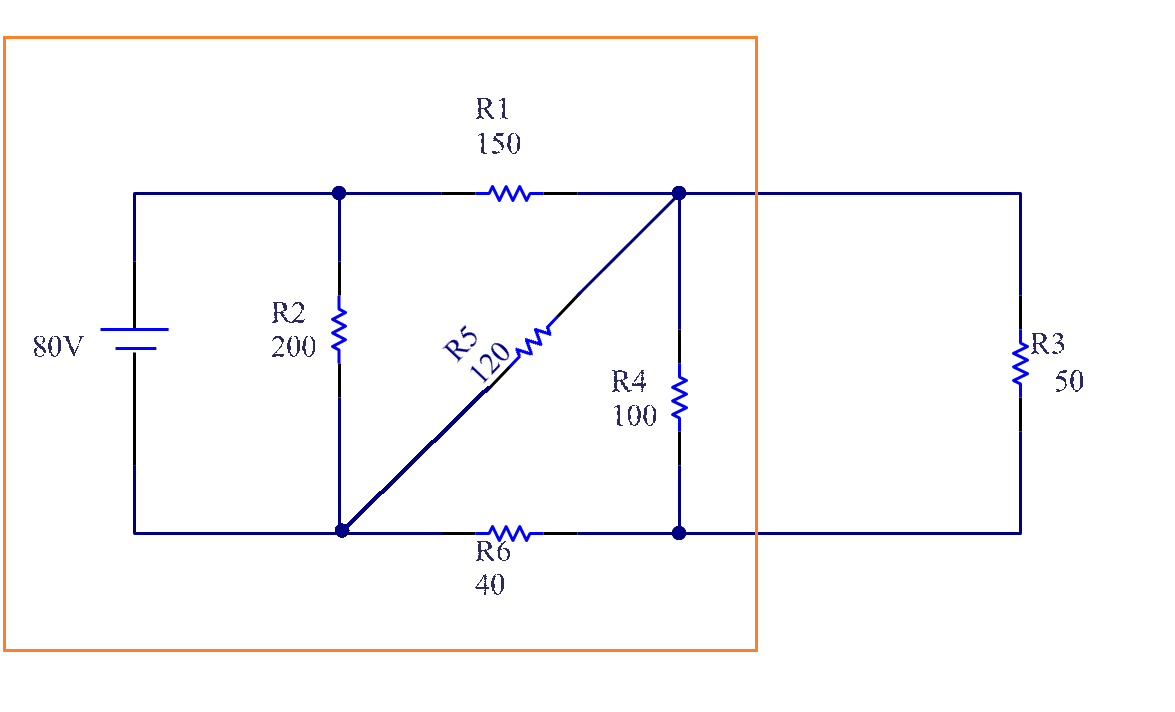can anyone here explain to me how to calculate total resistance in a parallels/triangle circuit? everything on google makes no sense. also im assuming ppl in mathematics might know ._.
btw im just a middle schooler so dont expect me to know everything 0_o
What have you learned about circuits in your class so far? Do you understand how currents work in a parallel / series circuit? (I'm assuming you meant series and not triangle?)
i do understand how to calculate stuff in series and parallel but idk about this one with the diagonal line in it
also im learning stuff for a science Olympiad tournament but my coach left me :(
Might be a silly question, but does the orange box in your screenshot have any significance or is that irrelevant?
nah, its just a pic i pulled from the internet, i needed to find a quick expamle of what i was talking about
Otherwise, we should just simplify the circuit as much as we can to deal with the resistors R4 and R3 are parallel to each other so you can combine them and then that would be in series with R6 and so you combine them and then that resulting resistor would be in parallel with R5 and as such you simplify the entire circuit
its partially making a bit more sense... thanks bro
Of course! Let me know if you have any other questions
I started to search up more and I found this https://www.electronicshub.org/resistors-in-series-and-parallel-combinations/ If you scroll towards the latter half on resistor networks, you can see an example of a similar problem
thanks :)
You're welcome!
oh neat, thanks @imqwerty
Join our real-time social learning platform and learn together with your friends!

